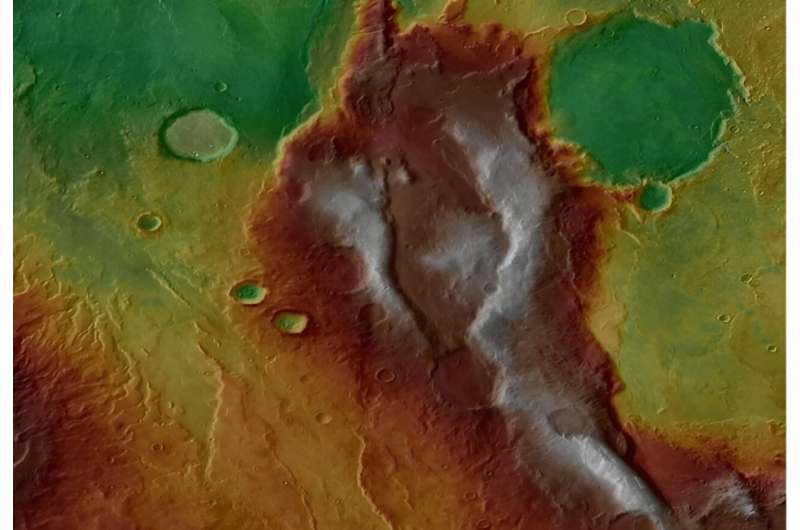This article has been reviewed according to Science X's editorial process and policies. Editors have highlighted the following attributes while ensuring the content's credibility:
fact-checked
peer-reviewed publication
trusted source
proofread
Mars had its own version of plate tectonics

Plate tectonics is not something most people would associate with Mars. In fact, the planet's dead core is one of the primary reasons for its famous lack of a magnetic field. And since active planetary cores are one of the primary driving factors of plate tectonics, it seems obvious why that general conception holds.
However, Mars has some features that we think of as corresponding with plate tectonics—volcanoes. A new paper from researchers at the University of Hong Kong (HKU) looks at how different types of plate tectonics could have formed different types of volcanoes on the surface of Mars.
Typically, when you think of volcanoes on Mars, you think of massive shield volcanoes like Olympus Mons, similar to those seen in some locations on Earth, such as Hawai'i. These form when repeated eruptions deposit layers of lava for millions of years. Those eruptions aren't impacted by how any underlying plates move underneath them. But they do create a different underlying landscape than elsewhere on the planet.
One of the main differences is that the volcanoes have a high silica concentration. Most of the rest of the red planet has relatively low silica concentration and consists primarily of basalt. However, they have distinctly more elevated levels of silica, and Dr. Joseph Michalski and his colleagues at HKU think they know why.
Back in the Archean age, 3 billion years ago, on Earth, geologists have theorized that a type of plate tectonics known as "vertical tectonics" forced the planet's crust to collapse into the planet's mantle. There, it was reformed, injected with a high concentration of silica, and then spewed back onto the surface due to erupting volcanoes.
That would conveniently explain why the silica levels of volcanoes on Mars are higher than on the rest of the planet. To back up their findings, the paper describes signs of numerous other volcano types, such as stratovolcanoes and lava domes, that also contain high silica concentrations and could result from this type of theorized tectonics.
On Earth, other active geological processes have worn down the rock that could have been formed by these processes billions of years ago. But there isn't nearly as much geological activity on Mars, so it provides a clearer picture of the resulting geology from these processes.
This body of work contributes to our overall understanding of the geology of Mars, and the discovery of so many additional volcanoes is sure to interest areologists for years to come. But for now, this new theory of Mars' geological history is another step in our understanding of the red planet.
More information: Joseph R. Michalski et al, Diverse volcanism and crustal recycling on early Mars, Nature Astronomy (2024). DOI: 10.1038/s41550-023-02191-7
Journal information: Nature Astronomy
Provided by Universe Today





















